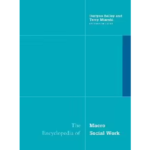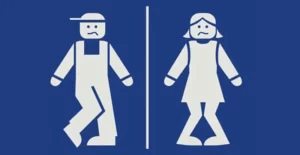Steven Soifer
Given the complexity of urban life, failure to bring about quick change is to be anticipated. Religion makes failure bearable. Religion helps to sustain involvement in the battle for social change when common sense indicates the need to withdraw.
— Monsignor William J. Linder, founder of New Community Corporation, Newark, N.J.
If Lam is not for myself, who will be for me? And if I am for mine own self, what am 1? And if not now, when?
— Rabbi Hillel (Blackman, 1963, 494)
Perhaps of all the areas of social work practice, the field of community economic development (CED) is the least developed and most poorly understood. There are few courses in this area offered in schools of social work in the United States and even fewer specializations. There are a number of reasons, including that involvement in this field often requires a knowledge of and ability to use numbers, something many social workers find distasteful. However, given the trends and growth in the CED field, it is important for social workers to be prepared to take jobs in this area.
INTRODUCTION TO CED
According to Sherraden and Ninacs (1998), community economic development can be defined as “link(ing) social and economic development through the creation and regeneration of accessible institutions that empower and improve the life chances of community residents” (p. 1).
CED can also be described as empowering community residents to have substantial input into or to take control over the economic processes in their neighborhoods. Three key areas of practice are housing/land, financial institutions, and work (Bruyn & Meehan, 1987).
Community development corporations (CDCs) spur on most CED endeavors. These are locally controlled, nonprofit organizations that engage in various activities in distressed communities. Usually, community residents, businesspeople, and local government officials sit on CDC boards. CDCs are best known as housing developers, and this has been their main focus and source of revenue since their beginnings in the 1960s. However many CDCs are also involved in land development, creating alternative financial institutions, and workforce development.
CONCEPTUAL FRAMEWORK FOR UNDERSTANDING CED
Rothman, in his classic articles “Three Models of Community Organization Practice” (1970) and “ Approaches to Community Intervention” (1995), lays out 4 tripartite models of understanding community practice. The three models he describes are social action, social planning, and locality development.
CED falls squarely in the tradition of locality development. An empowerment perspective, whereby collaborative partnerships between neighborhoods, businesses, and government are formed, typifies this model. Groups strive for self-sufficiency, and social workers help such groups attain their goals by acting as facilitators, networkers, and teachers.
Page 1
|COMMUNITY PRACTICES |
BRIEF HISTORY OF CED
Community economic development really got its start during the mid-1960s owing to the efforts of Robert F, Kennedy. With federal support, he helped establish the Bedford-Stuyvesant Restoration Corporation. As part of the Special Impact Program (an amendment to the 1964 Economic Opportunity Act), funding for CDCs became part of Johnson’s War on Poverty (Peirce & Steinbach, 1987). At that time, about 20 major CDCs were created. This became known as the first wave of CDCs.
The second wave of CDCs started in the 1970s. Again with federal backing, this time under the auspices of the Community Services Administration, the successor to the federal government’s Office of Economic Opportunity, many small to intermediate CDCs were created, most focusing on. nonprofit housing development. Also, under the Carter administration, HUD’s Office of Neighborhood Development was created, further supporting CDC efforts across the country. About 1,000 CDCs were established across the country, but many of these failed right away or during the early 1980s once Ronald Reagan became president and slashed federal funding in this area (Peirce & Steinbach, 1987).
Yet, it was during the Reagan years that the third wave of CDCs began, These CDCs, in response to federal funding cuts, became adept at developing other sources of funding for their endeavors. As a result, these new, “leaner and meaner” CDCs were able to thrive in a hostile federal environment, often with the help of major foundations and/or the business community.
While a number collapsed, many survived. Consequently, by the time President Clinton was elected, there were more than 2,000 CDCs in the country (NCCED, 1995). The best current estimate is that there are more than 3,400 CDCs in the United States (NCCED, 2000). This significant growth in CDCs can in part be attributed to the outpouring of local community initiatives in the last decade.
TYPICAL CED ACTIVITIES
Housing
As mentioned earlier, most CDCs have as their sole or primary component the building of affordable housing for low- to moderate-income people. In fact, the nonprofit housing sector as a whole has to a large degree replaced the federal government as the main provider of affordable housing, having produced approximately 550,000 units in a little over 30 years (NCCED, 2000).
Using creative financing plans, including donations, governmental loans, and bank loans (usually below-market interest rates), CDCs have produced much quality affordable housing across the country, particularly in distressed inner-city areas. Often, such projects have helped stabilize deteriorating neighborhoods. Once this has been done, it is possible for them to engage in other activities. Also, the formation of community land trusts (CLTs}, a vehicle for community control over land while making housing affordable to low-to-moderate-income home buyers, is another way in which CDCs can pursue an affordable housing strategy. Whether as a CDC or as its own non-profit organization, CLTs basically own the land and sell the dwelling to the prospective home-buyer. In this way, housing costs are reduced by as much as 25 % (Soifer, 1990). There are about 100 CLTS across the United States today. The latest information on community land trusts is available at www.iceclt.org (2000).
COMMUNITY FINANCES
A substantial minority of CDCs focus on providing alternative financial institutions to low- to moderate-income areas. As regular financial institutions abandoned the inner cities, there was little to take their place other than pawnshops and cash-checking places. Thus, CDCs can work to set up community development financial institutions (CDFIs), such as community development banks,
community development credit unions, or micro-lending programs. Each of these institutions tries to keep capital within poor communities and make affordable financial services available to poor people. One of the best-known examples of a successful CDF is the South Shore Bank in Chicago (Taub, 1994). Since its founding in 1973, the bank has lent out more than $600 million to over 13,000 individuals and businesses (About South Shore Bank, 2000). The most current information about South Shore Bank is available at their website at www.sbk.com/livesite/main/index.cfm.
Work
It comes as no surprise that unemployment rates are much higher in poor neighborhoods than in well-to-do neighborhoods. Also, with the deindustrialization of America
Page 2
| COMMUNITY ECONOMIC DEVELOPMENT |
and the creation of a low-paying service and high-paying high-tech two-tiered economy, poor people have few career opportunities in the inner city. Current welfare reform efforts and the welfare-to-work zeitgeist compound the plight of the inner city.
CED activities in this area include workforce development and job creation, sometimes through the vehicle of worker cooperatives. Clearly, the former is much more prevalent and focuses on providing the skills necessary for low- to moderate-income people to get and retain employment. According to the NCCED (2000), over 247,000 jobs have been created by CDCs.
However, a much less utilized, but potentially much more significant area of focus would be worker cooperatives. These entities allow workers to democratically own and control their own work. The author thinks that worker cooperatives have the greatest potential to revitalize inner-city neighborhoods (and should be considered by social workers, too; Soifer & Resnick, 1993). The
The Industrial Cooperative Association is the foremost group in the United States helping businesses become worker-owned (ICA, 2000). There are approximately 500 worker cooperatives in the United States today, and about 10,000 employee-owned businesses employ roughly 10% of the U.S. workforce (www.ica-group.org/# Common Questions About Employee Cownership/, 2000).
Goods and Services
Most Americans don’t realize it, but many people belong to one or more consumer cooperatives, These ventures, though much more popular in Europe and Canada, still directly affect over 100 million people, or about 40 % of the U.S. population! Examples of these cooperatives include Recreational Equipment Inc. (REL), the camping cooperative, and food stores like the Puget Consumer Cooperatives (PCC), both based in Washington state (NCESA, 2000). Such consumer co-operatives hold great hope for making goods and services more affordable for low- to moderate-income Americans.
Assets Building Framework
One important model that has been developed for helping distressed neighborhoods is the assets-building approach. This relatively new approach has much in common with the strengths perspective in social work. Instead of focusing on a community’s needs or deficits, Kretzmann and McKnight (1993) focus on a community’s assets. They provide a framework for utilizing not only
the individual capacities of people living in a neighborhood but also the resources of various institutions to mobilize for action and help these communities take control of their destiny.
There is much wisdom and common sense in this approach. Such a reframing allows social workers to look at a poor neighborhood through different lenses and approach the task of locality development from a different viewpoint. Of course, one can’t ignore the real problems that exist in the community, whether it be crime, drugs, poor public schools, lack of public transportation, or high unemployment—or all of the above.
Best-Case Examples of CDCs
There are many, many fine examples of CDCs across the country. Given space limitations, only a few can be mentioned.
The New Community Corporation (NCC) in Newark, New Jersey, is a faith-based community initiative and is widely recognized as one of the finest examples of CDCs in the United States. Calling itself “the most comprehensive community development corporation in the world,” NCC has a fine web page with up-to-date information about it (www.newcommunity.org/index HTML). Now over 30 years old, NCC owns $500 million in real estate, has an annual budget of over $200 million, is Newark’s biggest employer (1750 employees), has built over 3,000 housing units, has created five day-care centers through its Babyland, Inc. net-work has an impressive jobs training program (placing over 1,000 graduates each year), and has started an alternative school, a nursing home, a shopping center with a grocery store, and a restaurant (NCCED, 1995; NCC, 2000).
The Dudley Street Neighborhood (DSNI) initiative is another stellar example of a CDC that has brought about significant change. Located in Boston, DSNI has had its story chronicled in the book Streets of Hope (Medoff & Sklar, 1994). This organization is one in the country that has ever won from a city the right of a neighborhood group to control the eminent domain process, the power vested in a city to condemn and take property in the name of the common good. Through this mechanism, DSNI has been in the process of revitalizing the Dudley Street area in Roxbury. By controlling not only the property but also the planning process itself, DSNI is creating an “urban village“ for the low-to-moderate-income people residing there ( Dudley Street Neighborhood Initiative,2000). The latest information about DSNI is available at their superb website (www.dsni.org).
Page 3
| COMMUNITY PRACTICES |
COMPREHENSIVE COMMUNITY INITIATIVES (CCIS): THE “FOURTH” WAYE OF CDCS?
CCls are efforts to tackle the staggering problems existing in poor areas in a holistic manner rather than piece by piece. Consequently, from the classic social work person-in-environment perspective, those engaged in these endeavors argue that’ it’s not enough to focus on the individual; one also needs to address the entire community context,
In her book Common Purpose (1997), Lisabeth Schorr discusses in detail the current efforts to revitalize communities. These efforts focus on schools, human service programs, and neighborhoods. She explains why such efforts are successful, and why they’re not more widely known and replicated. In social work, there is a growing literature about such endeavors. Many of the best are compiled in Ewalt, Freeman, and Poole’s book Community Building (1998). One topic area covered in that collection, which is ripe for CCI activity, is “Community health partnerships.” There is also a clear focus on youth initiatives in their book. Sherraden & Ninacs’s book Community Economic Development and Social Work (1998) describes similar efforts. One important additional area added in their book is international community development, in particular the Grameen Bank in Bangladesh, which has served as an important mode! for certain CDFI activity in the United States—namely microlending. For the latest information, check out their website at www. grameen-info.org.
One of the best resources for the latest articles on community economic development is the website www.comin-org.utoledo.edu. For example, the latest working papers here include Harvey et al. (2000) Gentrification and West Oakland: Causes, Effects and Best Practices, Owen’s (2000) Political Action and Black Church-Associated Community Development Corporations, and Slater’s (2000) Low-Income Grassroots Organizations Work to Close the Digital Divide.
Best-Case Examples of CCls
One excellent CCI effort is Youth Build. Started in Massachusetts by Dorothy Stoneman, a recent recipient of a MacArthur Foundation “genius” award, participants in this program “spend half their time building and renovating low-cost housing” (Schorr, 1997, p. 33). The rest of the youths’ time is spent studying various subjects and learning how to be leaders. Youth Build has been so successful that by early 1997 it had become a federal program. About $100 million has been distributed to over 100 programs in over two-thirds of the U.S. states. The federal government’s new Youth-Build USA site is located at wiww.whitehouse.gov/ 99Initiatives/OneAmerica/Practices/pp_19980804, 2763.html, One of the best examples of a successful local chapter is Youth Build Boston (www.ybboston.org).
Another example is the Sand Town-Winchester initiative in Baltimore, started by the late innovative builder James W. Rouse. The idea was based on the notion that providing housing to poor people wasn’t enough, and that instead “physical development” had to be combined with “social renewal” (Schorr, 1997, p. 321). Currently, the Community Building in Partnership (CBIP) board in the area has built 300 homes and renovated over 700 others; provided health care to preschoolers, and regained significant community control over three elementary school curricula, budgets, and hiring; opened three health clinics in schools; employed over 200 people and trained or placed 600 more; set up a “community support center”; and reduced crime by about 16 percent (Schorr, 1997, p. 325; Live Baltimore, 2000).
CED TRAINING REQUIREMENTS FOR SOCIAL WORKERS
In thinking about teaching CED in social work schools, it’s important for the instructor to do some fieldwork and find out what community-building efforts are going on in their geographic area. A basic text is useful; possibilities include Blakely’s Planning Local Economic Development: Theory and Practice (1994) or Shuman’s Going Local: Creating Self-Reliant Communities in a Global Age (1998). Supplemental or substitute readings can be gleaned from this essay.
Knowledge Areas for Social Workers
Given the nature of the CED field, social workers interested in this area need to acquire the following knowledge base to enter this field:
Page 4
| COMMUNITY ECONOMIC DEVELOPMENT |
- Learn the history of community development and CDCs in the United States.
- Evaluate the community as the basic unit of a local economy and as a complex social organism.
- See the CDC model as the engine for the economic recovery and social-political revitalization of neighborhoods, communities, and cities.
- Compare and contrast the relevant models, methods, strategies, and tactics of local economic development.
- Critically analyze the field of community economic development and its future.
PRACTICE SKILLS FOR SOCIAL WORKERS
In order to seriously consider practice in the CED area, social work students would also need to acquire the following set of skills:
- Working out the financing mechanism of CDCs.
- Differentiating between the social processes of participation (recruitment, involvement, communications, research and analysis, planning, decision making, and implementation) and the technical processes of community economic development (opportunity and project development, planning, implementation).
- Assessing the following development processes: capital formation, community financial institutions, housing, community land trusts, commercial revitalization, small business and enterprise development, worker-owned businesses, industrial/manufacturing development, job creation, and workforce development.
- Appraising how issues and people from diverse communities, such as communities based on race, ethnicity, religion, gender, sexual orientation, class, disability, and age affect the process of community building.
It should be noted that in terms of both knowledge areas and practice skills, social workers must be aware of different approaches to community economic development issues based on such factors as the urban or rural nature of the project(s), and in particular the differing needs in communities of color (Soifer, 1998; Bradshaw, Soifer, & Gutierrez, 1994). The active role of religious institutions in this whole field must be kept in mind, too.
CONCLUSION
According to Kingsley, McNeely, and Gibson, (1997), there are seven key themes to community building through CCls:
(1) Focused around specific improvement initiatives in a manner that reinforces values and builds social and human capital; (2) Community-driven with broad resident involvement; (3) Comprehensive, strategic, and entrepreneurial; (4) Asset-based; (5) Tailored to neighborhood scale and conditions; (6) Collaboratively linked to the broader society to strengthen community institutions and enhance outside opportunities for residents; and (7) Consciously changing institutional barriers and racism. (pp. 7-8)
Furthermore, Kingsley et al. (1997) state that community building needs to be about both “place-based and people-based” interventions (p. 12). Finally, they argue that there needs to be a national initiative around community building, with all levels of government actively involved in partnerships with local communities on a range of issues.
The revitalization of communities across the country will require an effort at least as great as President Johnson’s Great Society programs, and a success rate along the lines that Schorr (1997) speaks about in her book. Social workers can play a crucial role on many levels to help make this happen. Now the only remaining question is if there is the will to do so.
References
Blackman, P. (1963). Mishnayoth: Nezikin. New York: Judaica Press.
Blakely, E. I. (1994). Planning local economic development: Theory and practice (2nd ed.). Thousand Oaks, CA: Sage Publications.
Bradshaw, C., Soifer, S. D., & Gutierrez, L. M. (1994). Toward a hybrid model for effective organizing in communities of color. Journal of Community Practice, 1{1), 1-14.
Bruyn, $. T,, & Meehan, J. (1987). Beyond the market and the state: New directions in community development. Philadelphia: Temple University Press.
Ewalt, P. L,, Freeman, E. M., & Poole, D, L. (Eds.). (1998). Community building: Renewal, well-being, and shared responsibility. Washington, DC: NASW Press.
Kingsley, G. T., McNeely, J. B.,, & Gibson, J. O. (1997). Community building: Coming of age. Baltimore: Development Training Institute and the Urban Institute,
Page 5
| COMMUNITY PRACTICES |
Kretzmann, J. L., & McKnight, J. L. (1993). Building communities from the inside out A path toward finding and mobilizing a community’s assets. Evanston, TL: Center for Urban Affairs and Policy Research.
Medoff, P., & Sklar, H. (1994), Streets of hope: The fall and rise of an urban neighborhood. Boston: South End Press,
National Congress for Community Economic Development (1995). The comprehensive achievements of community-based development corporations. Washington, DC: author.
Peirce, N. R., & Steinbach, C. F. (1987). Corrective capitalism: The rise of America’s community development corporations. New York, NY: Ford Foundation.
Rothman, J. (1995). Approaches to community intervention. In J. Rothman, J. L. Erlich, & J. E. Trop-man (Eds.), Strategies of community intervention (5th ed; pp. 26-63). Itasca, IL: E. E. Peacock.
Rothman, J. (1970). Three models of community organization practice. In £. M. Cox, J. L. Erlich, J. Rothman, & J. E, Trop-man (Eds.), Strategies of community organization (pp. 20-36), Itasca, IL: F. E. Peacock.
Scherr, L. B. (1997). Coninon purpose: Strengthening families and neighborhoods to rebuild America, New York: Anchor Books.
Sherraden, M.S, & Ninacs, W. A. (Eds.}. {1998}. Community economic development and social work. New York: Haworth Press.
Shuman, M. H. (1998). Going local: Creating self-reliant communities in a global age. New York: Free Press.
Soifer, S. D. (1998). A rural tenant organizing model: The case of TUFF-VT. Journal of Community Practice, 5(2), 1-14.
Soifer, 5. D. (1990). The Burlington community land trust: A socialist approach to affordable housing? Journal of Urban Affairs, 12), 43-57.
Soifer, S. D., & Resnick, H. (1993). Prospects for social work cooperatives in the 1990s. Administration in Social Work, 17(3), 99-116.
Taub, R. P. (1994). Community capitalism: The South Shore Bank’s strategy for neighborhood revitalization. Boston: Harvard Business School Press.
Resources
About South Shore Bank. (2000). Mission and history, Retrieved November 5, 2000, from the World Wide Web: http://www.sbk.com/livesite/aboutssb/ab_misshistory.cfm
Dudley Street Neighborhood Initiative, (2000). Homepage. Retrieved October 27, 2000, from the
World Wide Web: http://www.dsni.org/
Grameen Bank. (2000). Home page. Retrieved November 2, 2000, from the World Wide Web: http://www.grameen-info.org/
Harvey, T. et al. (2000). Gentrification and West Oakland: Causes, effects and best practices, Retrieved September 28, 2000, from the World Wide Web:http://comm-org.utoledo.edu/papers.html
Industrial Cooperative Association. (2000). Common questions about employee ownership. Retrieved November 5, 2000, from the World Wide Web:http:/fwww.ica-group.org/Common Questions About Employee Ownership
Industrial Cooperative Association. (2000). The ICA Group. Retrieved October 31, 2000, from the World Wide Web: http://www.ica-group.org/
Institute for Community Economics. (2000). Community land trusts. Retrieved October 31, 2000, from the World Wide Web: http://www/icecltorg/
Live Bald more, (2000). Neighborhood profiles: Sand town Winchester. Retrieved October 27, 2000, from the World Wide Web: http://www. livebaltimore.com/ neighbor/sand town HTML
National Center for Economic and Security Alternatives. (2000). Models and innovations: Cooperatives. Retrieved September 29, 2000, from the World Wide Web: http://www.ncesa.org/html/cooperatives. html
National Congress for Community Economic Development (2000). Working to make our communities work—home page. Retrieved September 29, 2000, from the World Wide Web: http://www.neced org! index.html
New Community Corporation. (2000). Home page. Retrieved October 31, 2000, from the World Wide Web: http.//www.newcommunity.org/ index.html
New Community Corporation. (2000). What’s new about New Community: Founder. Retrieved September 28, 2000, from the World Wide Web: http://newcommunity.org/about/ founder. html
One America—Youth Build USA. Retrieved October 27, 2000, from the World Wide Web: hup://www.whitehouse.gov/Initiatives/OneAmerica/Practices/pp_19980804.2763.html
Owens, M. O. (2000). Political action and black church-associated community development corporations. Retrieved September 28, 2000, from the World Wide Web: http://comm-org.utoledo.edu/papers.html
Slater, D. (2000). Low-income grassroots organizations; work to close the digital divide. Retrieved September 28, 2000, from the World Wide Web: hep] = comm-org.utoledo.edu/papers.html
South Shore Bank. (2000). Home page. Retrieved October 27, 2000, from the World Wide Web: HTTP
www.sbk.com/livesite/main/index.cfm
YouthBuild Boston. (2000). Home page. Retrieved November 5, 2000, from the World Wide Web:
http://www.ybboston.org/










+ There are no comments
Add yours